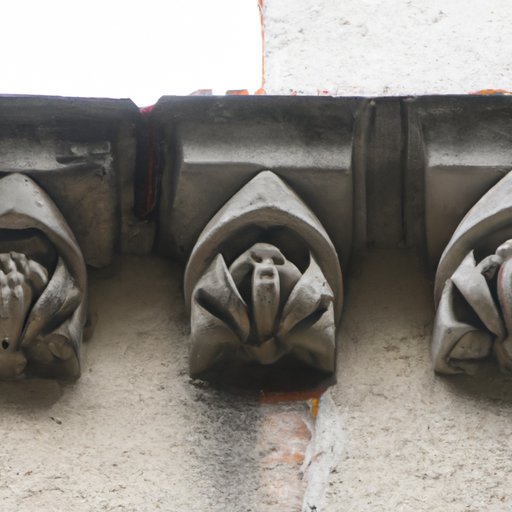I. Introduction
Corbels are often overlooked structural elements in building design, yet they play a crucial role in supporting overhanging structures and contribute to the overall aesthetics of a building. Understanding the purpose and evolution of corbels in architecture is important for architects, builders, and anyone involved in the construction or renovation of a building.
II. Corbels in Architecture: An Introduction to Their Purpose and Variations
A corbel is a projection from a wall designed to support a weight, such as an overhanging structure. Corbels are usually made of stone, brick, or wood and come in a variety of shapes and sizes. Different types of corbels include brackets, modillions, and console brackets. The purpose of corbels in building design is to provide support for an overhang while also adding decorative or artistic elements to the building’s exterior.

III. The Timeless Use of Corbels in Traditional Architecture
Corbels have been used in architecture for centuries, especially in traditional buildings. Examples of traditional architecture featuring corbels include cathedrals, castles, and manor houses. The significance of corbels in traditional architecture lies in their ability to provide structural support while also being decorative. Corbels contribute to the overall aesthetics of traditional buildings by creating intricate patterns and designs on the building’s exterior.
IV. Exploring the Historical Significance of Corbels in Building Design
The use of corbels in architecture dates back to ancient times when they were used in both functional and artistic capacities. Corbels were used in different parts of the world, including ancient Greece, Rome, and Egypt. Over time, corbel use evolved with advancements in building materials and technology, and they became a prominent feature in traditional architecture.
V. Corbels: An Architect’s Guide to Incorporating this Structural Element
When incorporating corbels in building design, it’s important to consider the size, weight, and placement of the overhanging structure. Best practices for using corbels in different types of buildings include ensuring the corbels match the overall style of the building and that they are placed at proper intervals to ensure structural integrity. Tips for ensuring structural integrity when using corbels in building design involve using quality materials and consulting with a structural engineer or building contractor.
VI. The Artistry of Corbels: How They Enhance the Aesthetics of a Building
Corbels can be used as an artistic element in a building’s design by creating intricate patterns and designs on the building’s exterior. This element is especially prominent in modern architecture designs, where corbels are often used as a decorative feature. Examples of corbels incorporated into modern architecture designs include apartment buildings and commercial properties.
VII. Corbels: Their Role in Supporting Overhanging Structures
As previously mentioned, corbels play a crucial role in supporting overhanging structures. They provide a stable base for the structure while also contributing to the stability and strength of the building. Examples of structures that use corbels as a crucial support element include balconies, eaves, and arches.
VIII. From Ancient Times to Modern Architecture: The Evolution of Corbels
The use of corbels in architecture has evolved over time, with advancements in building materials and technology leading to new and innovative ways to use corbels in building design. In modern architecture, the use of corbels has shifted from being primarily functional to being primarily artistic and decorative. However, corbels remain a crucial element in both traditional and modern architecture, contributing to the overall aesthetics and structural integrity of a building.
IX. Conclusion
Understanding the purpose and evolution of corbels in architecture is important for anyone involved in the construction or renovation of a building. From providing structural support to enhancing the aesthetics of a building, corbels play a crucial role in building design. Whether used in traditional or modern architecture, corbels remain a timeless and valuable element in building construction.
(Note: Is this article not meeting your expectations? Do you have knowledge or insights to share? Unlock new opportunities and expand your reach by joining our authors team. Click Registration to join us and share your expertise with our readers.)
